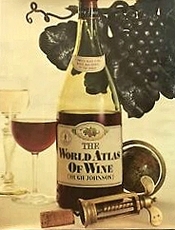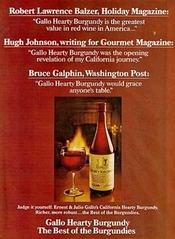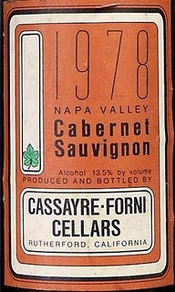The value of wine is a subjective assessment. Many consumers enjoy wine but would not think of spending more than $20 or even $10 a bottle. As a long-term, passionate winelover, wine is clearly more meaningful to me than the average wine drinker. I have often been eager to pay more than an average consumer might for a bottle of wine if the combination of quality, rarity and intrigue tantalized me.
It was not always this way. I did not grow up with wine. Prior to developing a serious interest in the subject, I thought of fine wine as something far removed from my realm. It had a sophisticated, if snobbish, image. It was something that the European aristocrats might consume. For me, wine was white, red, or pink and came in large vessels. Looking back, though, I note that at every exposure to a new wine, however inadvertent, I was interested in its origins and became increasingly aware that wines were different. Clearly, I was capable of sensing the differences, even though I had little interest in pursuing the topic at that time.
The turning point in my interest came after I had been in the professional workforce for a few years and was making enough money to treat myself to dining out at finer restaurants. In those days, it was the male of a couple who was invariably presented with the wine list and I, as the male, was invariably baffled and intimidated by the exotic enumeration of the unfamiliar that lay in my hands. After a few repetitions of that experience, which resulted in a befuddled acquiescence to a glass of house wine, I decided that I was going to learn more about this subject of wine, if only to ameliorate my embarrassment. So, I bought a book – Hugh Johnson’s
World Atlas of Wine – a superb reference for a map-lover like me. I then set out to purchase a wine, determine its provenance, taste it and note how it differed from others and whether I preferred it to previous wines I had sampled. The more wine I tasted, the more I was fascinated by the differences in aroma and flavor they exhibited. Thus, I became an ardent winelover and began to buy more of those wines that pleased me the most.

The World Atlas of Wine – First Edition
This transition happened over 40 years ago, but I can still remember some salient moments of those early discovery years. I recall my first Rioja tasting experience with a wine that, to me at that time, was exquisitely balanced with layered fruit, oak and spice nuances. It was a 1973 Rioja and I was so enamored of it as both a sensory experience and a bargain, I purchased a case! The price of that case was $39 – or $3.25 a bottle. That sounds like an incredible deal today. It was a good deal even then. If we adjust for inflation over the four decades, the modern equivalent price would be $11.70 a bottle. Out of curiosity, I checked on current price of a similar-quality bottle and found some at $9-$10. That suggests that wine is a better value now than 40 years ago.
A look at a few other commodities that are tracked on the Consumer Price Index (CPI) confirmed my suspicion. Let’s compare apples and oranges. The CPI tracks a category for wine prices for home consumption. A $5 wine purchase in 1979 would be a $10.51 wine purchase in 2021. That’s an increase of 110%. A $5 apple purchase has grown to a $20.36 price over the same time period – a 307% rise. Oranges are even more dramatic – a $5 purchase in 1979 has risen 547% to $32.35 today. Even a more general category of All Alcoholic Beverages has inflated to $16.26 – a 225% increase. By these measures, wine is a better value than ever.

1970’s Gallo Hearty Burgundy Ad
The reasons for wine’s consistent value are not well studied. It’s useful, however, to note the vast changes that have occurred over this time frame. In 1979, wine selections in the US heartland were mostly from California and Europe. There were virtually no Australian wines in the market. New Zealand Sauvignon Blancs were still a decade away from international recognition. South African wines and South American wines were only occasionally seen on shelves. Bargain wines came from North Africa – Algeria, Morocco and Tunisia – as well as Spain, Portugal and Italy. Pinot Grigio was a relatively unknown wine compared to Soave and Frascati. California wines were in the first wave of the modern era. Newly established wineries like Cakebread, Trefethen, Ravenswood and Domaine Chandon were getting impressive reviews for their wines. Now nearly forgotten wineries like Yverdon, Cassayre-Forni and Hoffman Mountain Ranch were producing sought-after bottles.

Cassayre-Forni Cellars Cabernet Sauvignon Label
A look at a retail wine assortment today shows the dramatic change in a generation. A profusion of labels from Australia, Argentina, New Zealand and Chile dominates most shelves along with California and Italy. French wines are in the background in most establishments, having lost their market dominance of 40 years ago to New World labels. Bargain wines are now often global brands, sourcing wines from wherever the price point demands. The wine business is much more international from a business perspective and many companies have wineries on multiple continents.
Even though there has been a consolidation in the wine trade over the decades, there are still new producers available every vintage. The quality of wine across the spectrum is clearly higher than it was decades ago. Winemaking technology has improved and helped to minimize the number of truly awful bottlings that make it to store shelves. Much more care is now taken to ensure that wine is transported in proper conditions. It was common in decades past to find newly-arrived wines showing signs of seepage and overheating somewhere in transit. While not eliminated, that factor is clearly less common.
Times are good for winelovers. Wine has never been better, more diverse, more available or a better value than it is today. Go out and discover something new on your next shopping trip.